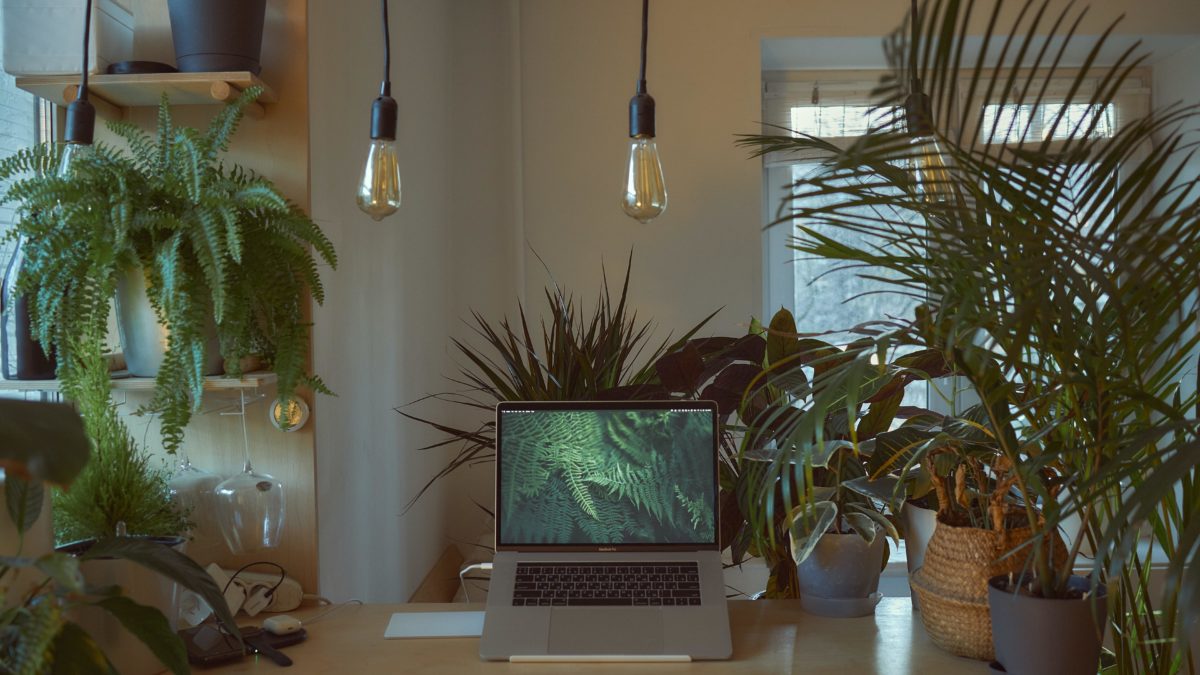10 Tips to Make Home Working Greener

By Fay Capstick
It is likely that the shift to home working was probably inevitable, but Covid hastened the process up, and now that it is here there is no going back, particularly in our industry, IT and Digital, where the trend was already well under way. So how can we make it greener and more sustainable? We have some ideas.
How green is your home?
If you are going to be working at home for all or some of the week, how green is your home? Here are some changes to consider making:
1. Do you use fossil fuels for heating? If so, maybe next time your boiler needs replacing consider getting a heat pump system as this is a greener option. In fact, as the UK government wants gas boilers to be phased out within 20 years, it’ll soon be your default option too.
2. Can you add loft insulation? Many councils have grants to help insulate and improve the efficiency of older homes, and walls and lofts are a key area where improvements can be made. The Energy Saving Trust says that the average house will save over £100 a year on fuel bills. So you’ll be saving money as well as carbon.
3. Could you fit solar panels? In the summer these can go a long way to meeting the energy needs of your home office (computers, kettle, lighting, dishwasher). You could even add a back up battery to store any extra electricity you generate but don’t use. This is particularly useful in the summer when you’ll probably have a surplus.
Plan the journeys you do make
You might not be commuting to the office, but that doesn’t mean that you aren’t planning to ever leave the house.
4. The Carbon Trust report on home working, which we highlighted last week (https://www.vodafone-institut.de/wp-content/uploads/2021/06/CT_Homeworking-report-June-2021.pdf), shows that we need to consider all our car journeys. Many people combined their commute with the school run and daily errands. These still have to be done, and therefore the car use in many more rural areas won’t actually be decreased. Try planning your trips to combine them where possible. If you can swap to an electric car, then even better.
Little changes all add up
5. All kettles use a lot of electric, and the average home will boil theirs many times a day. It’s changes in habit that will make the biggest difference here. Only boil what you need when you need it. That way you can help save carbon while keeping up with your caffeine fix. The Energy Saving Trust have assessed the market and produced a list of the best kettles currently out there (https://www.greenabode.co.uk/energy-saving-kettles/). Currently only the Eco Kettle brand have the Energy Saving Trust Recommended accolade.
Change could be coming though. Heatle is a new way to heat water (https://shop.heatle.de/en) which uses an induction immersion heater provide to exactly the amount of hot liquid you need.
6. Only print out what you really need, or better yet share it electronically instead. Most jobs within IT and Digital thankfully won’t need much printing. If you take a lot of notes consider an electronic notepad instead.
7. Don’t leave computer monitors and desk lamps on when you aren’t in the room, and fit low energy lightbulbs. All obvious stuff, but they require a change in habit.
Food matters
8. Working at home hopefully means you aren’t grabbing take away coffees with their associated waste. If you need a proper coffee fix and instant doesn’t cut it, consider getting a machine for home use. Try using the most sustainable type of pod you can get. Good Housekeeping have done the research for you (https://www.goodhousekeeping.com/uk/food/food-reviews/g36071733/best-coffee-pods/).
9. We all know that single use bottled drinks aren’t good for the planet, even if you do pop them into a recycling bin afterwards. So if you want to cut down on your bottled soft drink habit, consider getting a soda stream machine. Once super popular in the 70s and 80s they fell out of favour. They are now having a resurgence due to their environmental credentials.
10. Eating food prepared at home, preferably organic, plant based, local and seasonal can really help reduce your carbon footprint. This will make a huge difference over the pre-made sandwiches that we all so often eat at our desks in an office. If you must buy pre-made be aware that all sandwiches are not created equal, research has been done (https://www.theguardian.com/lifeandstyle/2018/jan/25/scientists-calculate-carbon-emissions-of-your-sandwich). The best choices are vegan or vegetarian, such as egg and cress.
Conclusion
Little changes really can add up. If you are trying to reduce your carbon by working from home then think carefully and plan the journeys you do make. If you haven’t yet it is worth undertaking a carbon audit of your life to see what changes can be made (https://www.carbonfootprint.com/calculator.aspx).
